This article contains spoilers for Black Mirror season 6 in its discussion of “too much” phones and too little empathy.
The sixth season of Black Mirror premiered last week on Netflix.
As an anthology series, the quality of the five individual installments varied dramatically from one episode to the next. Indeed, a large part of the appeal of a show like Black Mirror is that it’s often possible to argue about which episodes in a given season are stronger and which are weaker, depending on an individual audience member’s taste and preference. Each episode has a new cast and a new premise. Allowing for winking Easter eggs, each stands as its own self-contained project.
While episodes are self-contained, creator and writer Charlie Brooker is conscious of the context of his work, with the show often responding directly to the discourse around it. In earlier seasons, Brooker wrote “San Junipero” as a cheeky provocation to those that felt the show had become “too American” when it moved to Netflix. Brooker has also acknowledged that “Playtest” was written in response to Mallory Ortberg’s viral parody of a pitch for the show: “what if phones, but too much.”
This carries over into the show’s sixth season. The first two episodes both independently focus on the horrors of a gigantic streaming conglomerate named “Streamberry,” which has a familiar logo that consists of a single red initial and an aural ident that sounds suspiciously close to “ta-dum.” Both “Joan Is Awful” and “Loch Henry” are ultimately about the exploitative and cynical business practices of a streaming giant. In the midst of ongoing pay disputes regarding writers and streaming residuals — what has become known as “the Netflix strike” — it feels rather pointed for a show on Netflix.
More than that, the sixth season is engaged in a debate over what Black Mirror is about. What ties together these seemingly disconnected stories? What are the common themes? What parts of the show are essential and which are fungible? How far can the premise of Black Mirror stretch before it ceases to be Black Mirror? It’s an interesting question to ask, particularly in the context of an anthology series that has been running for six seasons.
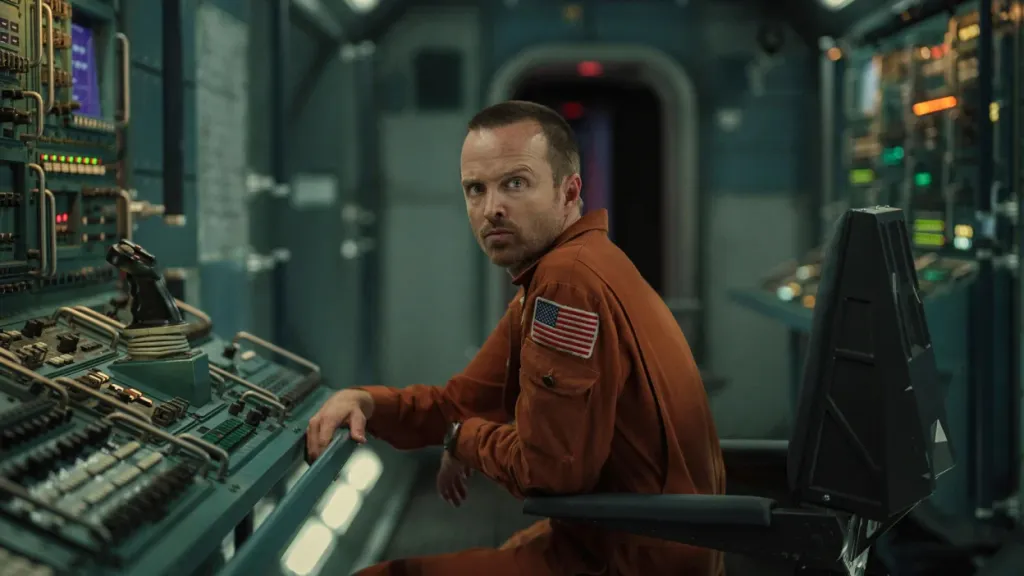
On a purely superficial level, the sixth season of Black Mirror seems to be a direct response to that blithe summary of the series as “what if phones, but too much.” Of the five episodes in the season, the final three are all period pieces that predate the modern phone-centric world; “Beyond the Sea” is set in an alternate version of the late 1960s, “Demon 79” is set against the backdrop of Britain’s “Winter of Discontent,” and “Mazey Day” is set in 2006, a year before the launch of the iPhone.
Indeed, for a series that is often discussed in terms of its understanding of the dystopian potential of modern and future technology, most of the episodes in the sixth season downplay their gadgetry. Sure, “Joan is Awful” is about AI-generated streaming content and “Beyond the Sea” is about space travel and robot replicants, but the plot of “Loch Henry” hinges on a VCR, the technology that drives “Mazey Day” is a digital camera, and the leads in “Demon 79” are most interested in a television set.
Black Mirror is often discussed in terms of its “technophobia.” The eponymous “black mirror” is a black phone, laptop, or computer screen; “Joan is Awful” acknowledges this in a shot of Joan (Salma Hayek) staring at a Streamberry show based on her life. Brooker has laughed off these criticisms, admitting, “I think overseas viewers assume that Black Mirror is written by the Unabomber, essentially — a Luddite, technology-hating, angry old man waving his fist at the App Store.”
Notably, the season’s final two episodes hinge on twists that are explicitly supernatural and do not fall within the framework of dystopian technology. “Mazey Day” is an episode about a sleazy paparazzi (Zazie Beetz) stalking the eponymous starlet (Clara Rugaard), building to the revelation that she is, in fact, a werewolf. “Demon 79” focuses on a deal between a demon named Gaap (Paapa Essiedu) and a young shop worker named Nida (Anjana Vasan).
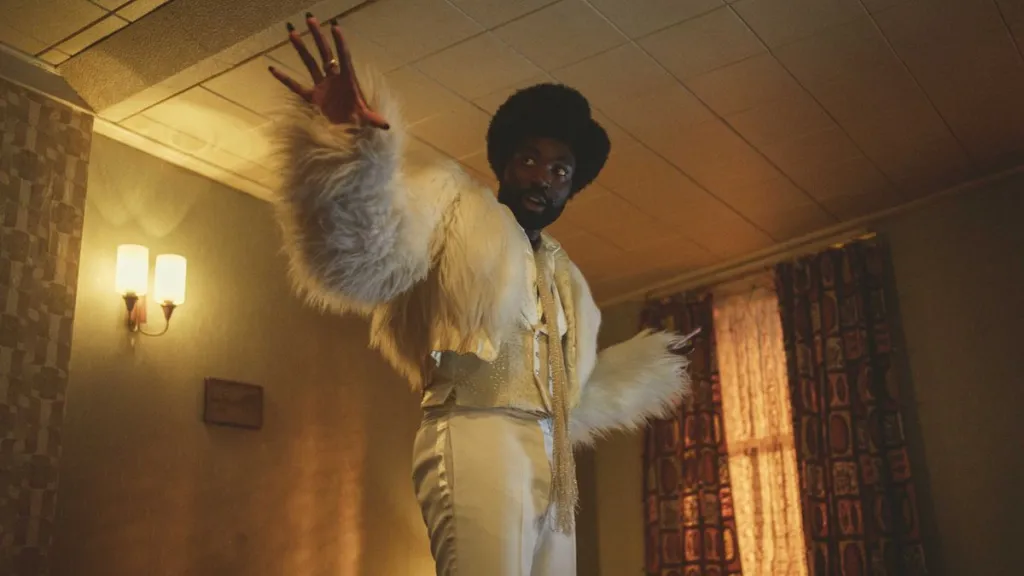
While “Demon 79” is introduced under the label “Red Mirror,” “Mazey Day” is a conventional Black Mirror episode — until it isn’t. Brooker acknowledges this shift was a conscious choice. “The thing I was trying to do this season is divorce my own mind from what the show is meant to be,” he told Esquire in an interview around the launch of the show. In some ways, the sixth season feels like a crucible, burning away everything inessential to Black Mirror.
So if Black Mirror isn’t about the evils of modern technology or even about potential future abuses of hypothetical technology, then what is it about? In many ways, the clue is in the title. The black mirror is a reflective surface. When the viewer looks at an unpowered phone, laptop, or television screen, they ultimately see themselves reflected back. It is about human nature, framed through the lens of an audience. It is about the human desire to watch and consume, untempered by empathy.
So many Black Mirror episodes are built around the idea of an antagonistic audience, spectators watching horrific events and often driving them. The very first episode, “The National Anthem,” focuses on British Prime Minister Michael Callow (Rory Kinnear), who finds himself pressured into having sex with a pig on national television after a member of the royal family (Lydia Wilson) is kidnapped. Crucially, Callow finds himself forced to participate in the broadcast by public opinion.
This theme bubbles through the other two episodes in the show’s first season. The second episode, “Fifteen Million Merits,” unfolds in a dystopian future in which everyone seems to participate in a nightmarish riff on reality television. The third episode, “The Entire History of You,” imagines a world where people’s memories are recorded and can be shared for the consumption of others. These three stories established a template for Black Mirror, and the show often returns to similar themes.
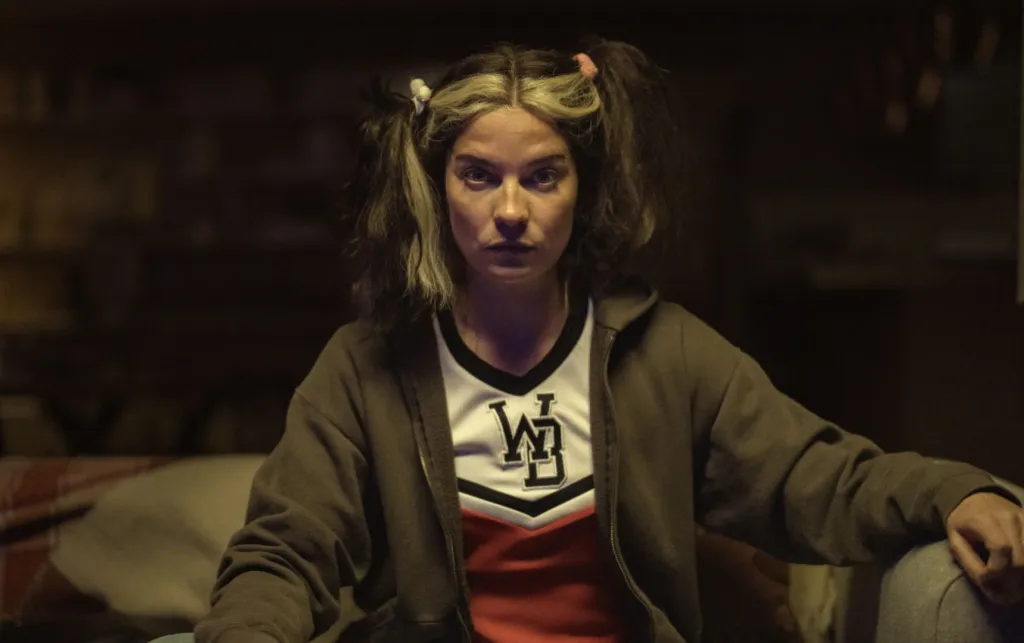
Many Black Mirror movies indict their audience. “White Bear” is about a criminal (Lenora Crichlow) who is constantly hunted as part of a broadcast spectacle, with her memory wiped every night. In “White Christmas,” Matt Trent (Jon Hamm) ran a group that shared footage of its members having sex with women, without the women’s consent. In “Shut Up and Dance,” a bunch of streamers force participants to engage in dangerous public spectacles for their own amusement.
In “Nosedive,” Lacie (Bryce Dallas Howard) finds her life thrown into disarray when the people around her start voting down her social interactions. In “Hated in the Nation,” a killer weaponizes social media to select their next victims marked by a #DeathTo hashtag. In “Black Museum,” the electrocution of a simulation of Clayton Leigh (Babs Olusanmokun) is cynically commodified and mass-produced as a means of entertainment by Rolo Haynes (Douglas Hodge).
Black Mirror is fascinated by the horror of such commodification, that humans could provide the basis of mass-produced objects to be bought and sold. In “Be Right Back,” Martha (Hayley Atwell) orders a robotic replacement for her dead boyfriend Ash (Domhnall Gleeson). In “The Waldo Moment,” Jamie (Daniel Rigby) discovers that his computer-generated avatar has escaped his control. In “Rachel, Jack and Ashley Too,” popstar Ashley O (Miley Cyrus) provides the basis for a mass-produced series of dolls named “Ashley Too.”
There’s an implicit criticism of the audience baked into all this. Roger Ebert famously argued that cinema was “the most powerful empathy machine in all the arts,” but Black Mirror often takes the opposite approach. Black Mirror consistently argues that human beings will take any opportunity to dehumanize others. This is often reflected in the tendency to act as passive observers and consumers, but it can become more literal in episodes like “Men Against Fire,” which explores attempts to weaponize this dehumanization in the military.
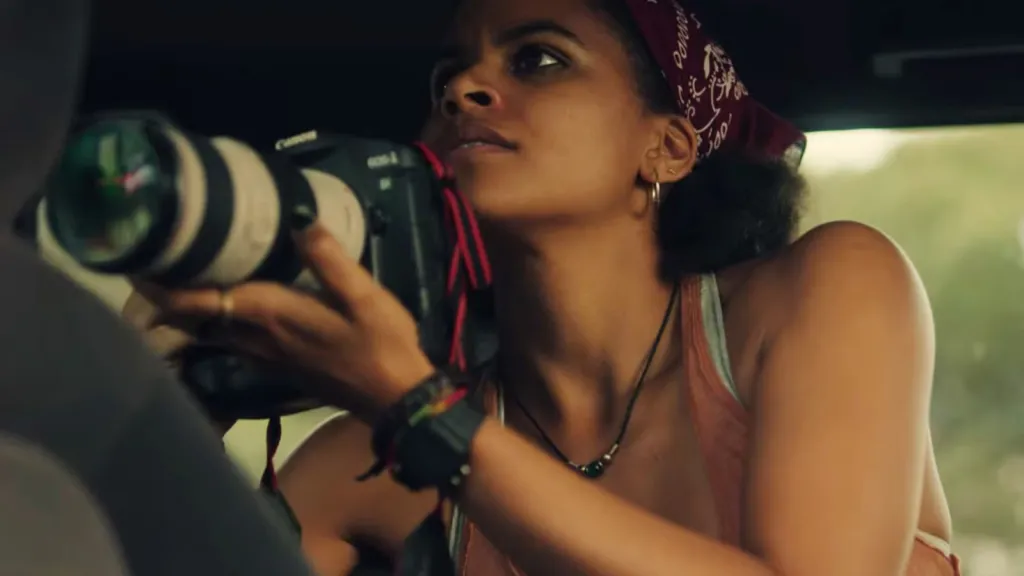
Black Mirror argues that screens often serve as barriers that limit human beings’ capacity for empathy, and the reduction of real people into commodified media — as images, computer-generated likeness, and even simulations — makes it easier for human beings to excuse or even enjoy their suffering. This is how social media works. To a certain extent, given its sadistic tendencies, Black Mirror is a show that exists in support of its own arguments. After all, the audience clearly enjoys watching the characters suffer.
Brooker has woven this complicity into the text of the show, most obviously in the interactive Bandersnatch. In that story, the viewer guides Stefan Butler (Fionn Whitehead) through what is essentially a psychotic breakdown. The viewer can make “good” choices for Stefan, like refusing to accept impossible deadlines, but those choices end the narrative. “Bandersnatch” propels itself on the viewer’s sadism, their choice to inflict suffering on Stefan.
These themes really bubble to the fore in the sixth season. “Joan Is Awful” is a story about the horrors of the commodification of image and the cynicism of the streaming model, but the episode’s most horrific revelation comes when Streamberry CEO Mona Javadi (Leila Farzad) explains that they deliberately decided to put a negative spin on Joan’s life because audiences respond to media that leaves them in “a state of mesmerized horror, which really drives engagement.”
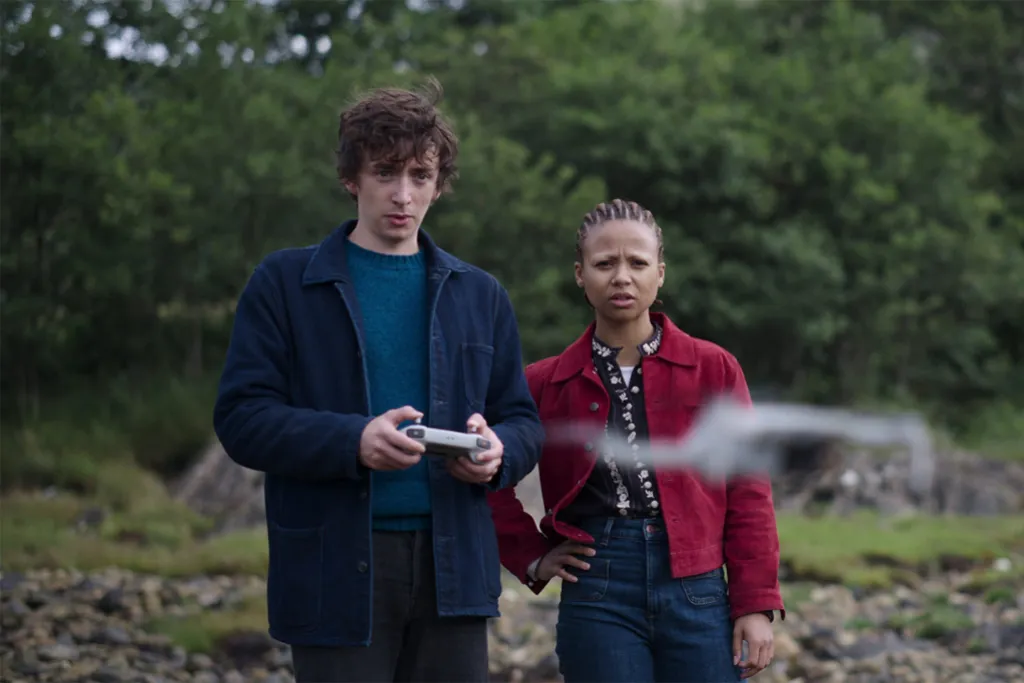
In “Loch Henry,” a small town conspires to take advantage of the exploitative true crime boom to boost local tourism, with Stuart (Daniel Portman) explaining that such Netflix shows act “like a brochure.” Davis (Samuel Blenkin) is convinced to abandon his plans for a documentary on local nature preservation to make “something people will actually watch; something they actually want to see.” Human suffering is just a shortcut to fame and fortune, so long as it’s hidden behind a screen.
This theme plays out in the season’s final two stories, even with their supernatural elements. “Mazey Day” focuses on the paparazzi, who reduce the lives of real people to mass-market tabloid gossip. In “Demon 79,” Gaap manipulates Nida through visions and appears to her in a form lifted directly from Top of the Pops. He even uses the television as a literal mirror. However, the real monster, Conservative candidate Michael Smart (David Shields), hides his racism behind a media-friendly facade, its own screen that affords his voters deniability.
Black Mirror was never really about phones in any literal sense. Instead, the show has always been about what the viewer sees staring back at them once the screen turns off.

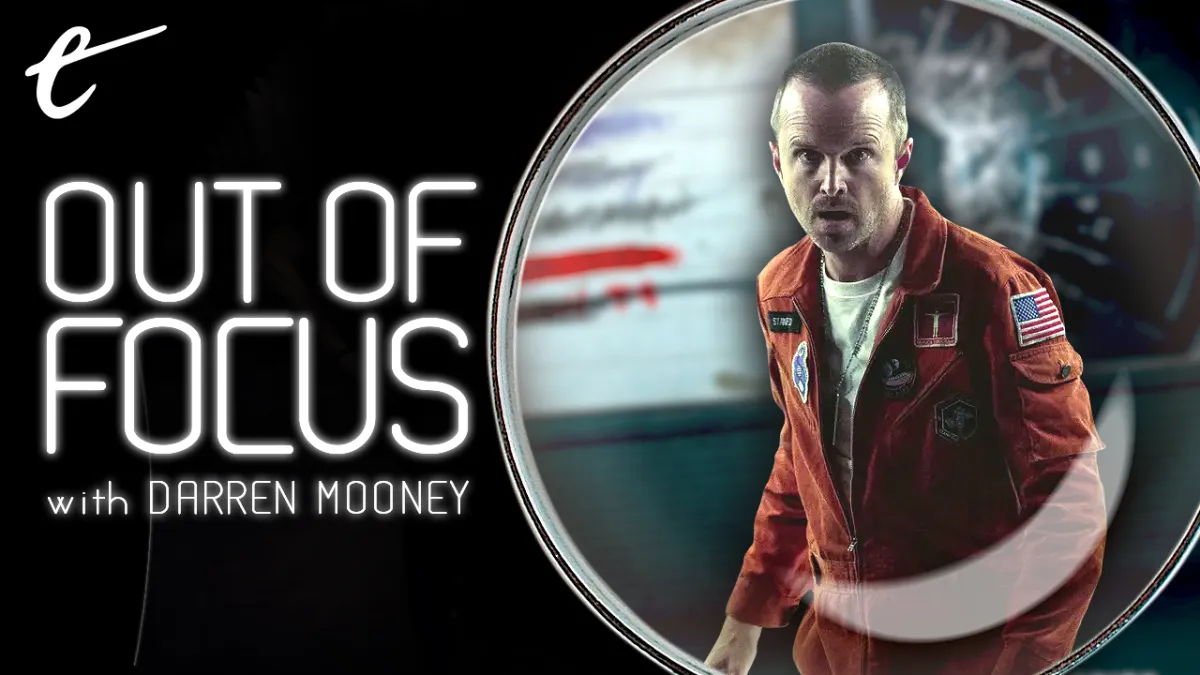




Published: Jun 21, 2023 11:00 am